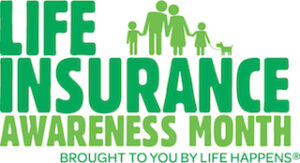Despite record-high consumer intent in purchasing life insurance, new research released April 12 finds too many Americans mistakenly feel life insurance is financially out of reach or too difficult to obtain.
According to the 2021 Insurance Barometer Study, 36% of consumers say they plan to purchase life insurance within the next 12 months, which represents the highest purchase intent in the survey’s history.
Even with this increased interest, there are 102 million uninsured and underinsured Americans who believe they need to buy life insurance or to increase their coverage. This represents 40% the adult population. The question is why don’t they buy?
The study reveals most common reasons people give for not purchasing life insurance are cost and having other financial priorities. But more than half (53%) admit that they are unsure what product they would need or how much coverage to purchase. Nearly half (47%) stated that they have put off purchasing and over a third (36%) believe they simply would not qualify for coverage.
Misconceptions making consumers hesitate?
Similar to past studies, this year’s Barometer report reveals more than half of Americans overestimate the cost of insurance by as much as three-fold.
This was especially true for younger generations. Forty-four percent of Millennials estimate that the annual cost of 20-year term life insurance for a healthy 30-year-old at over $1,000 when it’s closer to $165 per year. This misperception about cost, coupled with prioritizing other financial needs, puts families needlessly at risk of financial hardship should a wage earner die unexpectedly.
Like cost, many of the reasons consumers give for not getting coverage point to a lack of knowledge about the basics of life insurance. According to this year’s study, less than a third of consumers said they were “very” or “extremely” knowledgeable about life insurance.
Women were even less confident in their knowledge, with just 1 in 5 women saying they are very knowledgeable about life insurance. This may explain why life insurance ownership among women has declined for the past five years. Today life insurance ownership for women is 47%, much lower than the 58% of men who have coverage.
“Today, it’s not enough to say you need life insurance or to think about purchasing it. It’s time to act on these interests to protect your loved ones,” said Faisa Stafford, LUTCF, president and CEO, Life Happens. “If the pandemic taught us anything, it is that the future is promised to no one. Our data shows that virtually no one regrets purchasing life insurance, demonstrating those who own life insurance understand and appreciate its value.”
Overreliance on employer coverage
The study finds men (35%) are more likely to believe the coverage they receive through the workplace is sufficient than women (22%).
According to the latest U.S. Bureau of Labor Statistics, however, the median life insurance coverage offered at the workplace is either a flat sum of $20,000 or one year’s salary. More than half of U.S. households rely on dual incomes (54%) and for many, losing one income could be devastating to the household. The latest Insurance Barometer study reveals that 42% of families would face financial hardship within six months, and a quarter would suffer financially within a month.
“Having adequate life insurance coverage is the foundation for a secure financial future,” said David Levenson, president and CEO, LIMRA, LOMA and LL Global. “A good rule of thumb is consumers should have 10 times their salary to ensure their loved ones’ futures are protected. But, after consulting with a life insurance licensed financial professional, the right amount may be more or less than that depending on their circumstances.”
Expanded automated underwriting may help
Nearly half of Americans (47%) say they have put off purchasing the coverage they know they need. This could be, in part, because they are intimidated by the process.
Medical exams, collection of fluids and other aspects of the process can seem invasive. While simplified underwriting has increasingly been available over the past several years, the pandemic has accelerated its adoption. Today, LIMRA research shows that most life insurers offer accelerated or automated underwriting to their customers.
This year’s study indicates that almost half of consumers (48%) say they are more likely to purchase coverage because of the prospect of simplified underwriting, including 42% of uninsured Americans. More than half (55%) say they like the idea of avoiding seeing a doctor and undergoing a paramedical exam.
Life owners regret not purchasing earlier
Younger consumers who do not yet have a spouse/partner or dependents may believe they can put off buying life insurance. In reality, life insurance is significantly less expensive when you’re young and healthy.
“Nearly 4 in 10 insured consumers wish they had purchased their policies at a younger age,” noted Stafford. “Our mission at Life Happens is to help educate consumers and help them better understand life insurance so they can get the coverage they need.”
Given the dramatic spike in demand, LIMRA, Life Happens and six other trade organizations supporting the life insurance industry recently launched the Help Protect Our Families campaign to bring awareness to the U.S. life insurance coverage gap.
“While we hope for a quick end to the pandemic, it was a critical reminder to everyone in the life insurance industry that we still have a lot of work to do to help people get the appropriate life insurance protection that they need,” said Levenson.
More findings from the 2021 Insurance Barometer report and information about the U.S. coverage gap can be viewed on the Help Protect Our Families page.
The 2021 Insurance Barometer Study, conducted jointly by industry nonprofit LIMRA and Life Happens for the past 11 years, examines the financial attitudes and behaviors of Americans, with an emphasis on life insurance.













